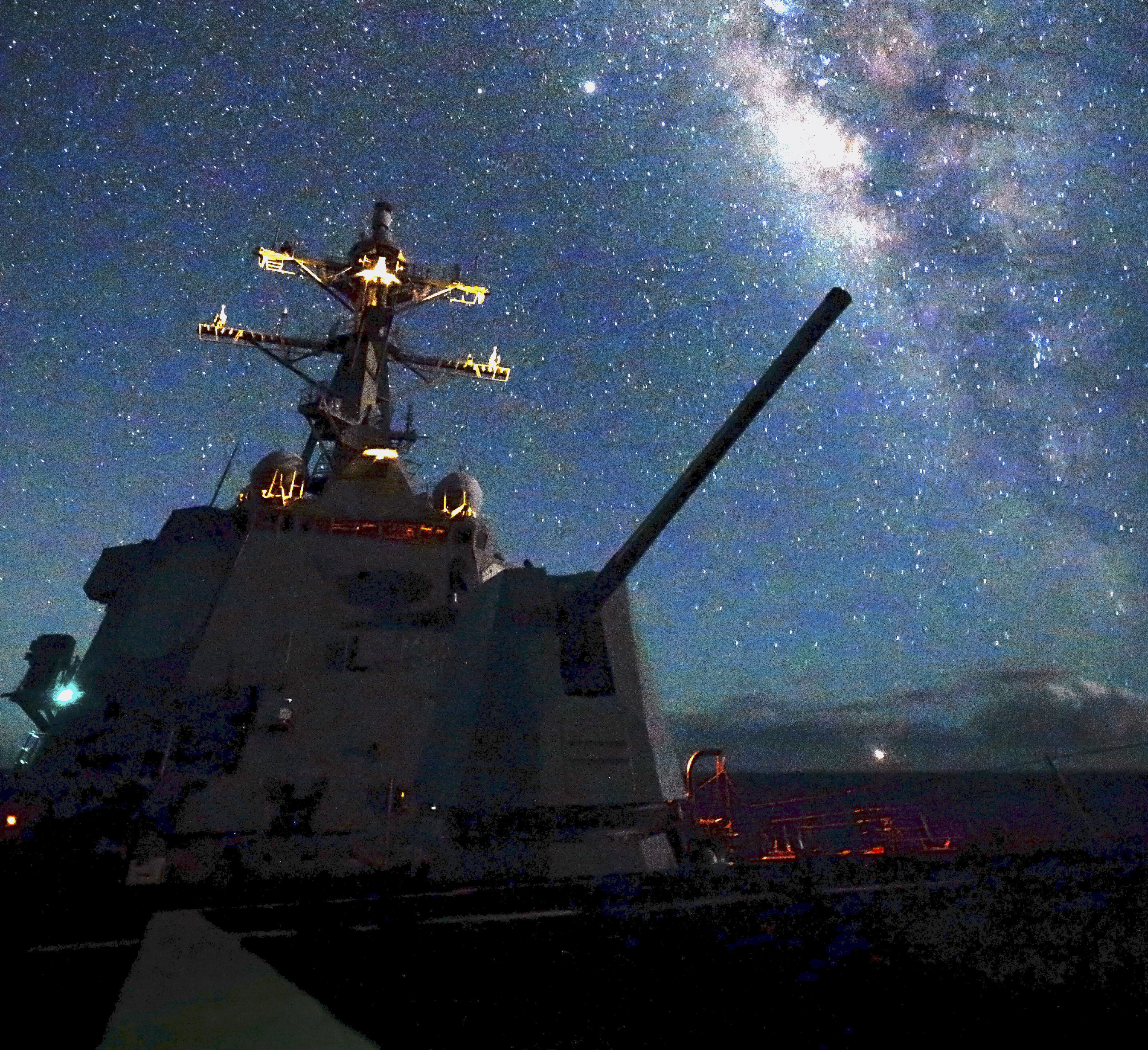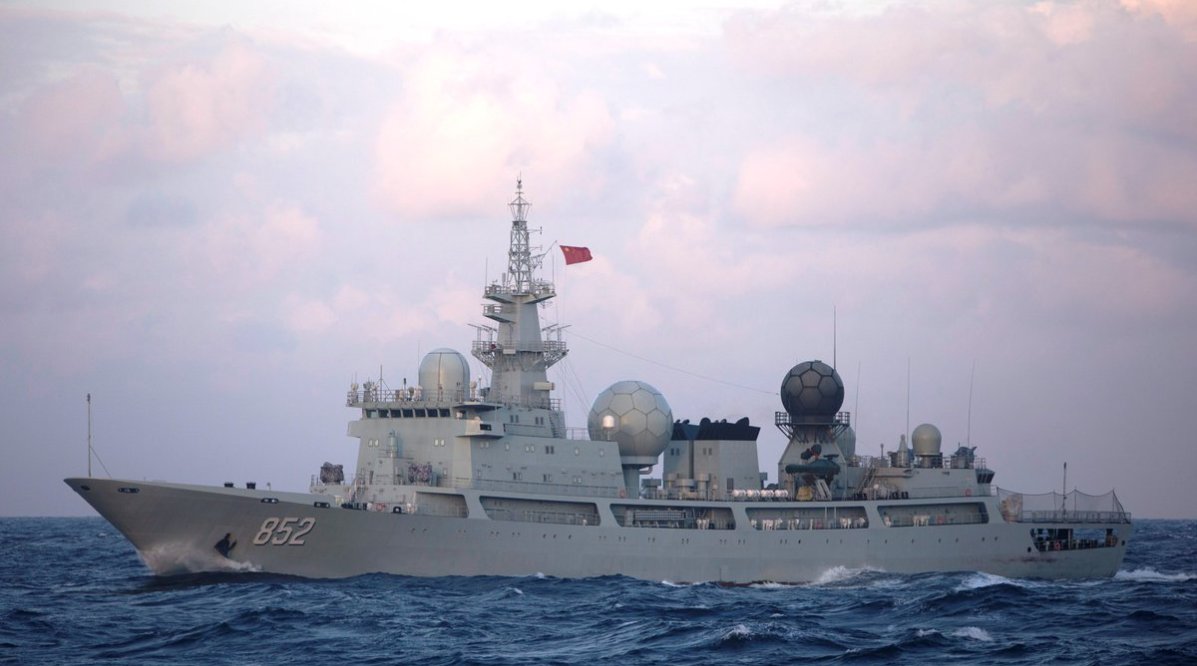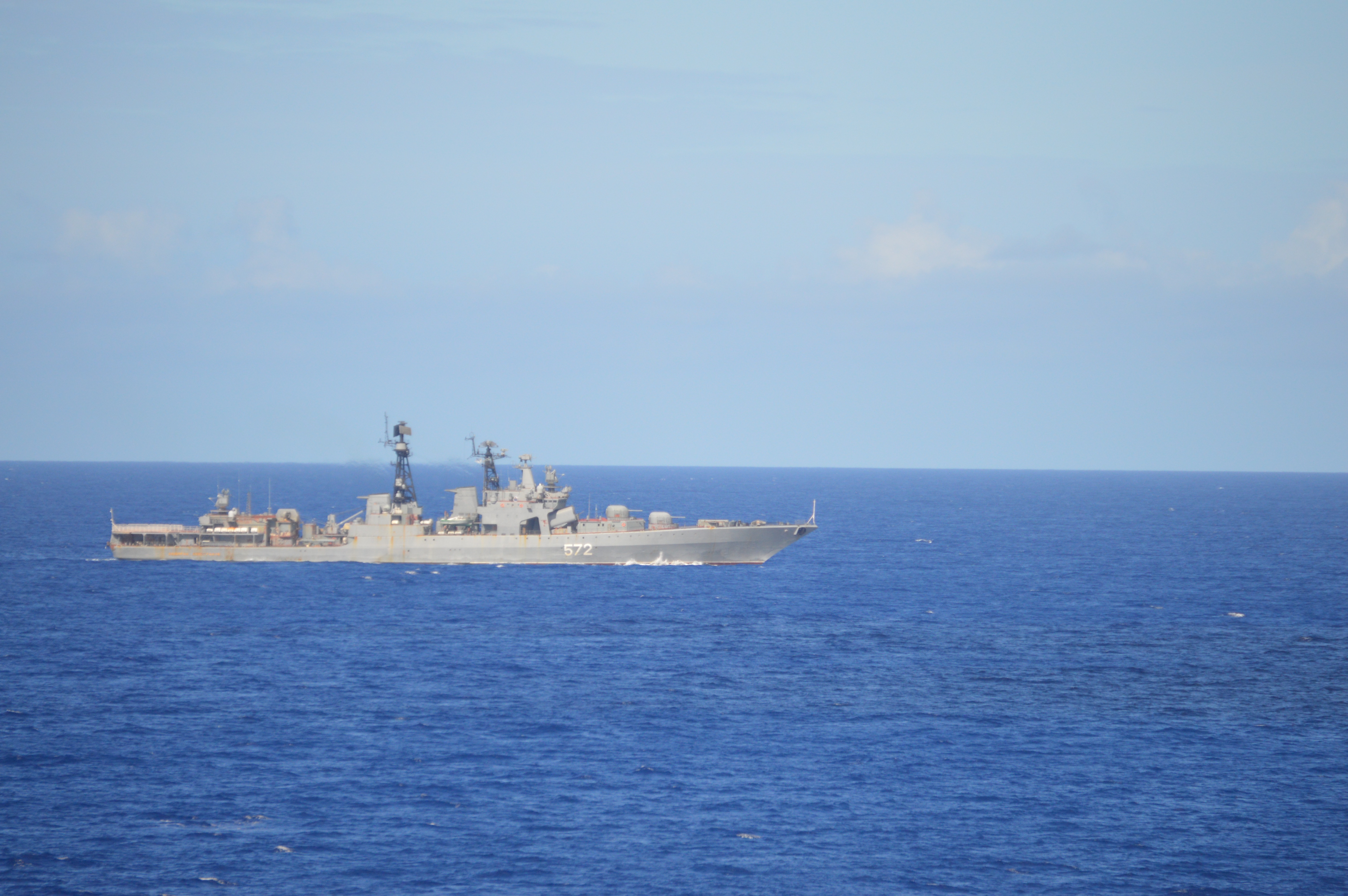
The U.S. Navy and partner nations have so far not encountered a Russian or Chinese maritime presence during the Rim of the Pacific 2020 exercise, according to a Navy official.
“No, we’ve had no presence of [People’s Republic of China] or Russian Federation ships within our waters that we’re aware of,” Capt. Jay Steingold, the director of this year’s RIMPAC exercise, told reporters today.
Steingold recapped the first week of the two-week exercise, which features 10 countries this year for a smaller and shorter version of the event due to the coronavirus pandemic.
“Our capable adaptive partners have completed more than 50 at-sea training evolutions ranging from maritime interdiction operations, gunnery and missile firings, anti-submarine warfare and anti-surface warfare events,” Steingold said. “We safely completed approximately 23 replenishments at sea, moving more than 100 pallets of cargo and almost 500,000 gallons of fuel between ships.”
Russia and China have a history of shadowing American vessels during maritime exercises, including at previous RIMPAC events.
During the 2016 RIMPAC, Russian Udaloy-class destroyer Admiral Vinogradov (DD-572) followed amphibious assault ship USS America (LHA-6). Two years earlier, during the 2014 RIMPAC, China dispatched an unsolicited surveillance vessel to the maritime drill even while its own ships were participating in the drills. The U.S. had invited four Chinese ships to partake in RIMPAC that year, but not the Dongdiao-class auxiliary general intelligence (AGI) vessel that made an appearance at the exercise.

While the U.S. Navy and partner nations are running a smaller version of the biennial exercise that features only at-sea warfighting events because of the COVID-19 pandemic, Steingold maintained RIMPAC’s importance for the region, regardless of the reduced scale and lack of shore events.
“RIMPAC brings like-minded navies together that are effectively working together in a time of crisis or in peace to ensure regional stability and security,” he said. “So RIMPAC 2020’s no exception in that regard, even though it’s an at-sea exercise specifically.”

Ten navies joined for this year’s exercise, which is kicking off its second and last week. The participating countries include: the United States, Canada, France, Australia, Japan, Brunei, New Zealand, Republic of the Philippines, Republic of Korea, and Singapore.
The 2020 RIMPAC will include one sinking exercise, known as a SINKEX, in which participants will fire on former USS Durham, a Charleston-class amphibious cargo vessel that was decommissioned in 1994.





